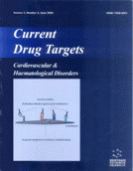Abstract
Studies published before the introduction of highly active antiretroviral therapy (HAART) have tracked the incidence and course of human immunodeficiency virus (HIV) infection in relation to cardiac disease.The introduction of HAART regimens, by preventing opportunistic infections and reducing the incidence of myocarditis, has reduced the prevalence of HIV-associated cardiomyopathy of about 30% and the prevalence of cardiac involvement of AIDSassociated malignancies of about 50%. However, HAART regimens, especially those including protease inhibitors have been shown to cause, in a high proportion of HIV-infected patients, a metabolic syndrome (lipodystrophy/lipoatrophy, dyslipidemia, type 2 diabetes mellitus, insulin resistance) that may be associated with an increased risk of cardiovascular disease (approximately 1.4 cardiac events per 1000 years of therapy according to the Framingham score). A careful stratification of the cardiovascular risk and cardiovascular monitoring of patients under HAART according to the most recent clinical guidelines is needed.
Keywords: human immunodeficiency virus, highly active antiretroviral therapy, metabolic syndrome, cardiovascular disease














